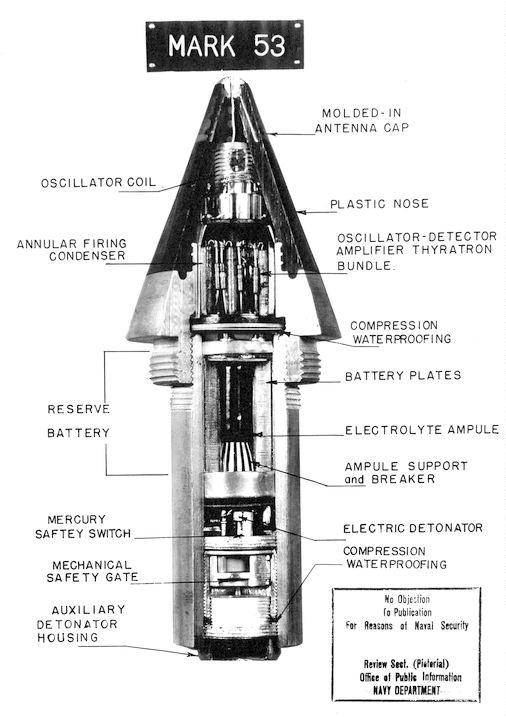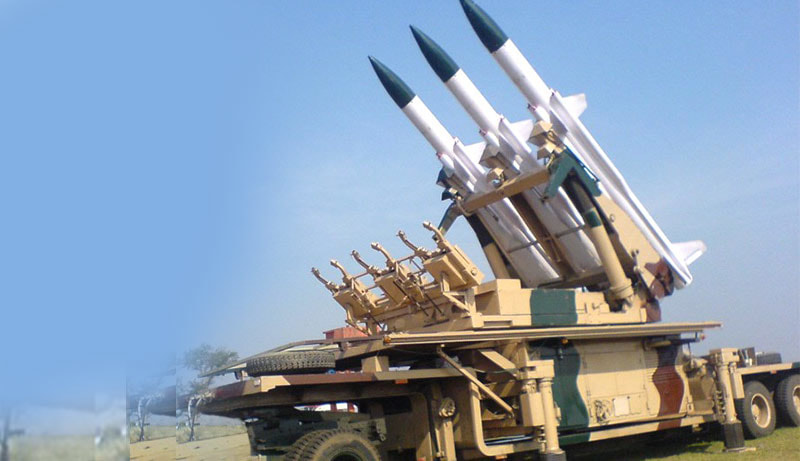|
FUZES Every warhead must have a fuze. Fuzes are the devices which sense the right moment to detonate the warhead. There are numerous kinds of fuzes which operate on different principles and are suitable for different kinds of missiles, warhead and environment of operation. The most common types of fuzes are impact fuze, altitude fuze, and proximity fuze. Impact Fuzes Impact fuzes are used in all anti-tank missiles. Some anti-aircraft and anti-ship missiles also are provided with this fuze in addition to proximity fuze. In impact fuze, an electric pulse develops when it hits another solid object with a certain relative velocity which leads to high deceleration or inertia force. This electric pulse is used to trigger the warhead. The values of impact energy required for this purpose are always much above any impact that the missiles may be subjected to during normal handling and transportation operations. Altitude Fuze In this type the warhead detonation is initiated on sensing a preset altitude. This altitude sensing could be based on barometric pressure measurement or radio-altimeter reading. Proximity Fuze These are most often used when the impact possibility is less due to unavoidable errors in guidance and control, the missile is expected to pass in proximity if the target above or below, left or right within a certain distance. The proximity fuze can be active or passive system. In the active fuze a very low power and low range radar system transmits radiation only when the target is a small distance away and then when it receives certain strength of reflected signal it detonates. It can also be an active laser radar system. In a passive system it is generally infrared based proximity fuze. Launchers and Ground Support Systems All the missiles need certain ground systems to help launch them at the specific targets. Launchers are the most important of these systems. The large ballistic missiles are launched from silos under the ground or submarines or moblile vehicle based launchers. The small missiles are launched from a launch-cum-container tube resting on a human shoulder. The launchers can be very demanding piece of engineering effort with precision in aiming the launcher at a particular target and very high rates of turning in elevation and azimuth in case of' antiaircraft missiles. In addition, the ground support requires target search and tracking facilities which are normally provided by radar or optical sights, television or infrared detectors. If the missile range is say 50 km, the search radar will have range capabilities of as much as 100 km in good weather to give adequate time for launching the missile and intercepting the target at full range of missile. The ground system is developed to withstand the environment. For certain surface-to-air homing missiles the ground system will also help illuminate the target for the missile to home-in while command generation and transmission system is needed in command guided missiles. In addition to these we need communication and intelligence systems also on the ground to coordinate the functions of various missile launching units and have adequate information on targets. We also need to identify between enemy aircraft and friendly aircraft before launching a missile. This system is called IFF (Identification Friend or Foe). In this audio signal at known frequencies is beamed at the suspected target and if the signal is returned by the aircraft (it is automatic without pilot's participation) then it is friendly. In the case of long distance missiles extensive support in the form of ground computers and power supplies and air-conditioning, etc., are needed. Check out and Simulators To certify the missiles worthy of deployment and ready for operation, a periodic health monitoring of its vital subsystems is carried out. This is generally done through an automatic and computerized check procedure on the ground. Similarly, simulators are provided specifically for training the personnel in the operation of the missile. These simulate all the functions of the missile's electrical and microwave components. Test Ranges Extensive testing of missiles proceeds with their deployment. This testing is in two phases, i.e. development testing and user evaluation testing. These tests are done at test ranges which are suitably located keeping in view the safety requirements. The ranges have instrumentation facilities to collect data for evaluation of the missile flight. The safety zones of these regions a.re very much dependent upon the size and range of the missile and the flight path. Some of the ranges are located close to the sea while some others are located in the desert areas. In India the major range facility is located in Orissa at Balasore. There are two other test ranges equipped with instrumentation for testing launch vehicles, Thumba near Trivandrum and Sriharikota. These ranges are mainly for the use of Space Department. The instrumentation facilities provide for tracking radars, electro-optic instruments and telemetry receiving stations and meteorological facilities. In the range, flight tests are carried out from the Block House. Real-time data processing facilities and other facilities exist to ensure the range safety for carrying oat flight vehicles in case of using telemetry command system. This is the last article of our article series - Missile Technology Thanks for reading ................
KMT
10/11/2017 11:21:16 pm
Great .Thanks.
Reply
Leave a Reply. |
AuthorPalash Choudhari Archives
June 2021
Categories
All
|



 RSS Feed
RSS Feed
